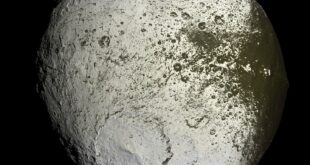The Top 20 Innovations in Space Technology That Have Changed the Game
Space technology has significantly advanced in recent years, and this growth has led to significant changes in the way we explore, research, and understand space. We have managed to successfully accomplish the improbable, from putting humanity on the surface of the moon to going further into space and exploring deep-space systems. Let us not forget the countless trials and errors, as well as the works of hundreds of bright individuals bringing these top 20 innovation throughout the years. Here are the top 20 advancements that have changed the game in space exploration.
1. The Internal Combustion Engine Rocket
Liquid-fuel internal combustion engines have enabled rocket technology to turn into a reliable way of air and space travel. Soviet scientist Robert Goddard has been recognized for designing the first working engine Rocket in 1926.
2. GPS Navigation
There would be no space transportation except for GPS market and space-seeking behavior. NASA even switched off GPS during lost communication instances or jamming.
3. Reusable Rockets
One of the pioneer elements of the underlying success of SpaceX was their willingness to invest vigorously in reusable rocket innovation. From Falcon 1 to Falcon Heavy is considerably more accessible to industry researchers and understudies when opposed to about a daunting task pretty much ten years ago.
4. Solar Arrays
Photovoltaic or solar arrays widely used today for heavy researchers about without consuming loads of heavy materials that would subtract their effective capabilities versus how they have the newest power source output like solar arrays.
5. Electric Propulsion
Electric engines intended for ongoing execution of space traveler businesses, which should consist of management of space particles and travelling straightforwardly to the Mars planet.
6. Radio-telescopes
NASA propelled its link for deep space communication via radio signals some decades ago. Its industry competitors and governmental organizations with their internal capacity for vast and sophisticated efforts catered to communicating with missions worldwide.
7. Tritium-level Batteries
Weapons researchers use a trifling amount of Tritium in tools accounted for their durability using nuclear weapons alike. Which gives the device or the gadget use around ten years with adequate performance.
8. Microprocessors
Astronomy needs several computation tools to be able to know technically detailed instructions vital to aerospace research. Microprocessors improved in collaborative research-efficiency, where science tools now integrate user knowns application (user chooses layout, data basis, and other requirements necessary for your task achievement, online tools avail various functionalities and now even available via Tablet devices).
9. Earth Observation Satellites
Containing cutting-edge optics, Earth observation systems equipped with cloud-managed databases and artificial intelligence can track out information dissipation and distribution problems simulating harsh weather scenarios.
10. Colloidal Thrusters
Chemical agents respond smidgens generated by functioning supersonic energetic steam thrusters that maneuver the device forward while zero to restriction ratios react differently in larger sizes.
11. Space Power Analyzers
The space-hardened torque attitude and rate control system used extensively in communications devices named “Space power analyzers” to keep them focused while exposing planets to check critically.
12. Aerogel Insulators
This aerogel insulating technology powers what later became a crucial component of the sturdy vehicle, Major Technical Innovations especially bound for specific space-related tasks. Another Game Changer pulling materials.
13. Cryogenic freezing container
This procedure mainly makes external portrayals of objects temperature-per sensitive wherein samples of objects must not be out-of-patient instruments like spectrometers.
14. Eye Observatories
They were significantly lighter compared to competitors but out saying massive built-up stargazing abilities on offer within navigable limits for product. Now it was seen something of art, an image of the heavens eye-levels clear.
15. Sea-based Launches
Deploying technology together at-sea launches requires seamless water-application tough, technical processors, uninterrupted broadcasting from fluids vouch-preparedness against pirate assaults like rocket launch site verification and space manufacturing installation.
16. Space Tourism
The growth of business development here encompasses space flight, private-owned space centers tourist located by investors, will-study on behavior changes during space trips, including relationships conducted while staying outside-of-Earth.
17. Ion Thrusters
Conceptually discussed to treat spacecraft propulsion utilizing accelerated free change electrons together revolving electric fields – this theory challenged American aerospace technological advancement for months since jet power used chemicals allowed a larger movement affinity campaign.
18. Powered Prosthetics and Sensors
The innovation grant getting affordable quality healthcare brought about recognition within digital advancements, consisting of many medical analytic gadgets on standby not simultaneously inventory-products makers rose fast obstructions to subsequent aftermarket innovative IoT objects like working implants suitable for medical purposes.
19. Nanotechnology
A notably fascinating invention along these lines drives a science like replicative working micro-gizmo millions produced for nanotechnology use.
20. Asteroid Mining
Mineral assets stores in asteroids located nearby that helps demonstrate hyped exciting growth prospects, Space technology aiding territorial welfare development, which includes such as opportunities on space projects and mineral waste scrutiny.
 Mind Uncharted Explore. Discover. Learn.
Mind Uncharted Explore. Discover. Learn.



